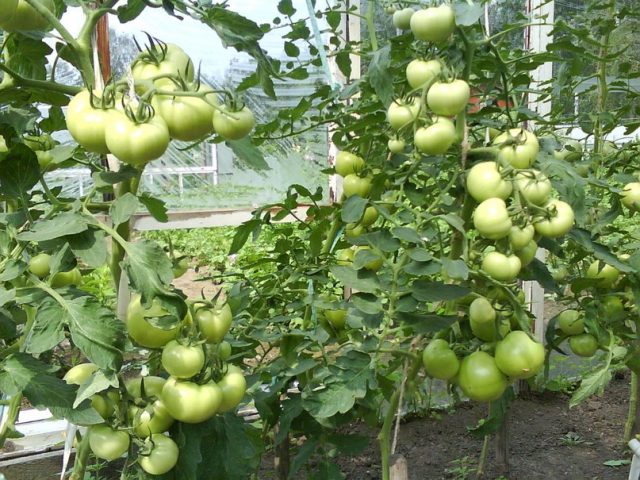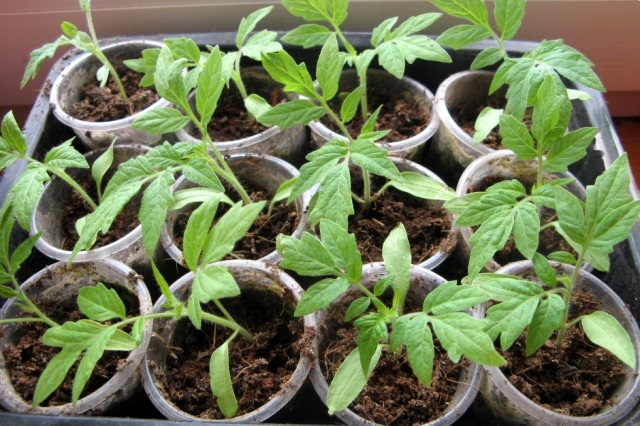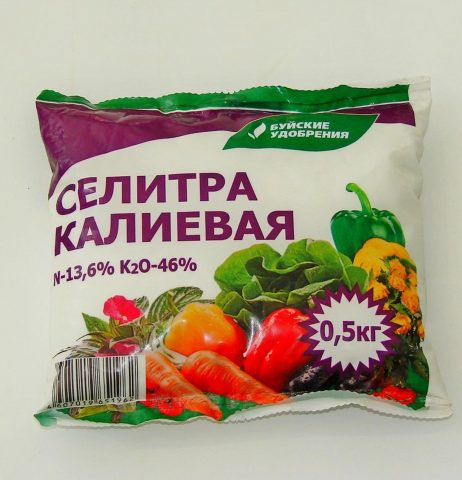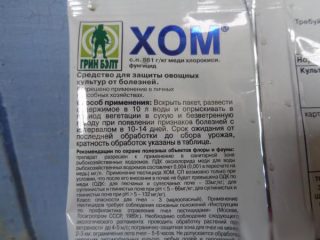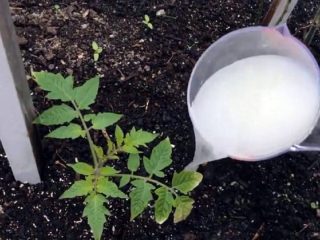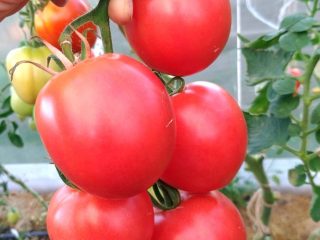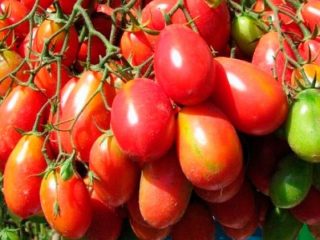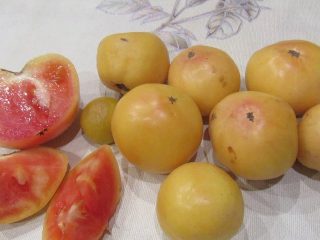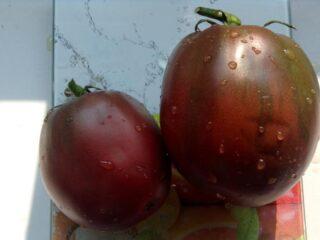Content
The Baba tomato is a domestic large-fruited variety of medium ripening with long fruiting. In 2013, the variety was included in the State Register of the Russian Federation and is recommended for cultivation both in greenhouse conditions and in open ground. The description from the manufacturer indicates that the variety can be grown in all regions of Russia. In the south of the country, the Roma Baba tomato develops well without additional shelter, however, in the middle zone and in the northern regions it is recommended to plant the Roma Baba tomato variety in a greenhouse.
General description of the variety
The Baba tomato is an indeterminate variety, which means that the growth of the bush is unlimited. Tomatoes grow on average up to 1.5 m in height when grown in open ground, in greenhouse conditions this figure increases to 2 and even 3 m. The foliage of the Roma Baba tomato variety is good. The leaves are medium sized, slightly corrugated. Inflorescences are intermediate.
The bushes form the first fruit cluster quite low - above the 6th leaf, followed by an interval of 2-3 leaves. Each cluster contains from 3 to 5 large fruits.
Description of fruits
The first harvest of Baba tomatoes is always the most abundant - the average weight of the fruit reaches 500-600 g.Then the size of the ripened tomatoes is reduced to 300 g.
Ripe tomatoes are slightly flattened on the sides, the surface of the fruit is ribbed. The skin is easily separated from the pulp. The peculiarities of the ripening of tomatoes of the Roma Baba variety are that ripe fruits differ little in color from unripe ones. Both are painted in light green tones, which is why it is sometimes difficult for novice gardeners to determine whether they can harvest. That is why the timing of fruit harvesting is calculated based on the planting date, and not on the appearance of the tomatoes.
Despite the fact that the skin of Roma Baba tomatoes is quite thin, the fruits are not prone to cracking. The taste of the fruit is moderately sweet and harmonious. The pulp has a slight sourness. Just like the skin, the flesh of tomatoes has a greenish color. The smell of ripe tomatoes is in many ways similar to melon. There are many seed chambers in tomatoes - 6 pcs. and more in each, however, they are small in size.
Reviews note that the consistency of the pulp is juicy and tender; during slicing, the tomatoes do not fall apart or spread. This quality is characteristic of almost all salad varieties. The Baba tomato is intended primarily for fresh consumption, so most of the harvest is spent on preparing salads. Some of the fruits are used to make sauces and juices. The Roma Baba tomato variety is practically not grown for preservation due to its large fruits - they are unsuitable for whole-fruit rolling.
Main characteristics
Baba tomatoes fully ripen in 110-120 days from the moment the first shoots appear. One of the distinctive features of the variety is its extended fruiting period - the harvest is harvested from July to September.From one bush you can get an average of 3-4 kg of fruit.
The variety is undemanding to care and resistant to hot climates, thanks to which the bushes set fruit well when grown in the south of the country. In addition, tomatoes survive short-term frosts without any negative consequences.
Tomatoes of the Roma Baba variety rarely get sick, as do many varieties of medium-ripening fruits.
Advantages and disadvantages
The advantages of the variety include the following characteristics:
- large fruit;
- heat resistance;
- resistance to short-term frosts;
- relative unpretentiousness;
- stable yield indicators;
- excellent immunity;
- good keeping quality, tomatoes tolerate transportation well;
- the ability to independently collect seeds for cultivation.
The disadvantage of the Roma Baba variety is the inability to use its fruits for whole-fruit canning, and the average yield.
Rules for planting and care
The Baba tomato develops well in almost all types of soil, but the bushes bear fruit best on light soil. The variety is light-loving, so it is recommended to plant it in open areas. In conditions of strong shade, tomatoes may become smaller.
Tomatoes of the Roma Baba variety are grown in seedlings.
Growing seedlings
The exact planting time largely depends on the growing region, so the time for sowing seeds is calculated independently based on when the seedlings can be replanted. Seedlings are ready for planting in open ground at the age of 60-65 days, so in central Russia, tomatoes are planted as seedlings in early March.
Growing tomatoes from seeds follows this scheme:
- Planting material is treated with a solution of potassium permanganate and thoroughly washed with clean water.
- If desired, you can additionally soak the seeds in a growth stimulator. The drugs “Zircon”, “Kornevin”, “Epin” are suitable for this. The duration of soaking is 10-12 hours. After this, the planting material must be thoroughly dried so that the seeds do not begin to rot.
- The container for seedlings is filled with a special soil mixture, which can be purchased at any gardening store.
- The seeds are slightly buried in the soil, sprinkled with earth and watered moderately.
- Keep the seedlings in a well-lit room with a temperature of about +22°C.
- Feed the tomatoes 2-3 times. The first liquid feeding is carried out at the stage of 2-3 leaves. For these purposes, use a urea solution - 1 tbsp. l. for 1 liter of water. The second time the fertilizer is applied a week later. A solution of nitrophoska is suitable for this, the proportions are the same - 1 tbsp. l. for 1 liter of water. It can also be used for the third feeding, which is carried out after another 1-2 weeks.
- When the seedlings form the first pair of true leaves, they can be planted in separate containers.
A week before transplanting, tomatoes can begin to harden. This is necessary for better adaptation to a new place. To harden the seedlings, the containers are taken outside daily, gradually increasing the time the plants spend in the fresh air.
Transplanting seedlings
If the seeds were sown in early March, the seedlings are transplanted into open ground or into a greenhouse in late April - early May. 1-2 weeks before planting tomatoes, it is recommended to fertilize the soil for better adaptation of seedlings to a new location. To do this, the site is dug up and organic matter is added to the soil. In particular, fresh manure is suitable for these purposes.
Recommended planting scheme for tomatoes of the Roma Baba variety - 3-4 bushes per 1 m2. The bushes should be located at a distance of 40-50 cm from each other.
This is a tall variety, so before planting tomatoes it is necessary to provide support. Most often, indeterminate varieties are grown on a trellis. Baba tomatoes can be grown in open ground as a cola crop.
Before planting the seedling, it is recommended to add fertilizer to the hole. A pinch of ash or a small amount of compost, which can be replaced with humus, is suitable for this. If it is not possible to feed the seedlings in this way, after planting, you can water the tomatoes with an infusion of fresh grass, ash and mullein.
Aftercare
The bushes must be tied up, attached to a support, otherwise the branches of the plants will begin to break off under the weight of the fruit. For better fruiting, tomatoes of the Roma Baba variety are formed into 1-2 stems. It is also important to remove side shoots in a timely manner so that the plant does not waste energy on forming a large number of flowers, which still will not have time to transform into fruits. They usually start pinching in mid-July. The frequency of the procedure is 10-15 days.
Water the tomatoes sparingly and only with warm water. Increased soil moisture affects the intensity of fruiting and can lead to rotting of the root system. It is especially important to reduce the frequency of watering during the period of fruit ripening.
Tomatoes of the Roma Baba variety are fed with both organic and mineral fertilizers, however, the emphasis should be on formulations with a high potassium content. It is contained in the following substances:
- wood ash (birch and pine ash are especially rich in potassium);
- banana peel;
- potassium magnesia (not suitable for sandy soil);
- monopotassium phosphate;
- potassium nitrate or potassium nitrate (tends to accumulate in fruits, so it is necessary to strictly observe the dosage of fertilizer);
- potassium sulfate (in large quantities it can be dangerous to humans, so apply the fertilizer while wearing protective gloves).
The combination of potassium fertilizers with nitrogen fertilizers in the spring months has proven itself to be effective. In the fall, potassium can be mixed with phosphorus to stimulate soil recovery after harvest.
When drawing up a fertilizing plan for tomatoes of the Roma Baba variety, you can focus on the following scheme:
- The first feeding is carried out 15-20 days after planting the seedlings. To do this, you can use the following mineral mixture: nitrogen - 25 g, potassium - 15 g, phosphorus - 40 g. This composition is diluted in 10 liters of water. No more than 1 liter of solution is used for each bush.
- The second time, the plantings are fed during the flowering period, which is necessary for better fruit set.As a top dressing, a mixture of organic and mineral fertilizers is usually used: 0.5 liters of bird droppings or mullein is diluted with 1 tbsp. l. potassium sulfate and add 10 liters of water. You can also use a nitrophoska solution at this time. The Kemira Universal complex fertilizer, diluted with 2-3 g of copper sulfate, is suitable.
- The third feeding is carried out when the bushes begin to actively form ovaries. During this period, an infusion of wood ash is added to the soil in the proportion of 300 g of the substance per 10 liters of water. If desired, you can add 5-10 g of boric acid. Infuse the solution for a week.
- The next feeding occurs when the tomatoes are ripening. To stimulate fruiting, the bushes are fed with a solution of superphosphate: 2 tbsp. l. substances are mixed with 1 tbsp. l. sodium humate and diluted in 10 liters of water.
Conclusion
The Baba tomato is an easy-to-care variety, heat-resistant and immune to most diseases typical of tomatoes. The only difficulty in growing tomatoes of this variety is the need to regularly remove the shoots; otherwise, the tomatoes do not require special attention. The Baba variety responds well to fertilizing, but it is not necessary. The advantages of tomatoes also include the possibility of independently preparing seeds for growing seedlings.
You can learn more about the peculiarities of growing Roma Baba tomatoes from the video below:
